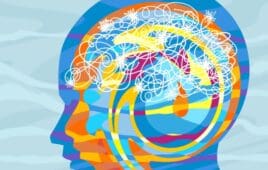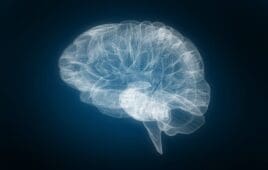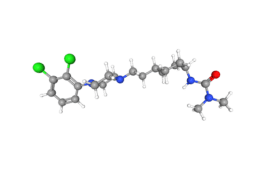
Image from the Brain Explorer 2 software, a desktop application that enables users to interactively explore human brain anatomy and gene expression data in 3D. [Allen Institute for Brain Science]
“What’s been happening for quite a while now is a desire to really try to understand the basic architecture of the brain better,” Lein said. And what’s become quite clear is that the basic unit of the brain is the cell.” So we need to describe the brain at the cellular level.”
AI is aiding this exploration, given its capacity to handle and interpret vast amounts of data. Through sophisticated algorithms, AI can analyze millions of data points, extract meaningful patterns and augment human capability. In this respect, AI promises to be a game-changer in neuroscience, especially with respect to brain mapping.
“In terms of the progress of the scientific field, I’ve just never seen things advance so quickly, where some tools came along that really allowed a different approach to doing this, and a very scaled-up approach to doing it,” Lein noted.
AI: A powerful neuroscience research tool
It’s only fitting that AI would help drive neuroscience forward. After all, neuroscience has field AI advances for decades, with researchers such as Warren McCulloch and Walter Pitts laying the groundwork for artificial neural networks in the 1940s. More recently, Geoffrey Hinton, referred to as the “godfather of deep learning,” propelled AI progress with the development of backpropagation, a cornerstone algorithm for neural networks.
Now, AI is reciprocating the favor, taking a central role in propelling brain research. The Allen Institute, supported by Amazon Web Services (AWS) and the National Institutes of Health (NIH), is spearheading the Brain Knowledge Platform. Imagine mapping 200 billion cells in the human brain. Well, the Brain Knowledge Platform is on it, harnessing the power of AI to process and interpret brain imaging and genetic data.
Data democratization and the need for a common language in biology
Shoaib Mufti, head of data and technology at the Allen Institute, envisions an egalitarian data system “where natural language queries” render “data accessible to everyone.” This is part of their key objective of data democratization.
Yet, having a common language and a standard reference for the biology community is vital. As Lein put it, “This idea of having a version of references that the whole community can map to and have a common language around that is a powerful motivator here and something that we’re trying to do as part of this project.”
Machine learning methodologies, including pattern recognition and predictive modeling, are poised to uncover previously unknown data connections and trends. These techniques not only speed up new discoveries but could also change our understanding of brain disorders by revealing their cellular origins.
Researchers at the Allen Institute initially worked on creating an entire map of the mouse brain. The map of the human brain, though, will be “about 1,000 times bigger,” Lein said.
“These are really transformative technologies that have enabled us to create really the first quantitative map of all the cells and then set a foundation that everyone can start to use the same terminology, map these in space, and really relate that to the functional organization and to functional assays that can be measured in human beings.” The ability to map cells in space can help bridge gaps in the field of neuroscience, facilitating communication and cooperation between researchers working on imaging and the cellular levels. This approach could help link the microscale and the macroscale, forming a comprehensive view of the brain.
Parallels between AI in neuroscience research and the human genome project
In a way, the Brain Knowledge Platform is cut from the same cloth as the Human Genome Project from the turn of the 21st century. “The genome was an attempt to map all of the genes and other regulatory sequences as they occur along the chromosomes. And it’s led to an official version reference that the community accepts,” Lein said. “Many of these same ideas hold for a cellular reference, where we can now define this initially as a quantitative taxonomy of types of cells.”
As we move forward, it is evident that the approach used for the Human Genome Project could serve as a model for cell atlases, guiding their development into fundamental components of biology. However, the task of mapping cells, as Lein points out, is far more complex than mapping 3 billion bases on chromosomes. Cells are dynamic entities, continually evolving and adapting in response to their environment.
The promising role of single-cell transcriptomics
Lein underlined the promise held by single-cell transcriptomics in aiding this endeavor. “Recent advancements in the field have now made it possible to measure all of the genes used in individual cells across millions of such cells,” he noted. Identifying similar gene patterns across these cells can help researchers categorize the diverse cell types constituting the brain. The creation of this comprehensive cell atlas could enhance our understanding of diseases and expedite the development of more effective treatments for neurological disorders.
In any event, creating a map of brain cell connections is a daunting project. Imagine one cell connected to 10,000 others. But the potential gains are substantial, heralding advances in neuroscience and improved treatments for debilitating disorders like Alzheimer’s and Parkinson’s. In the mutual interplay between AI and brain research, we see that as we push forward the boundaries of artificial intelligence, we we further unravel the mysteries of our minds.
Filed Under: Brain Breakthroughs, Data science, machine learning and AI, Neurological Disease



